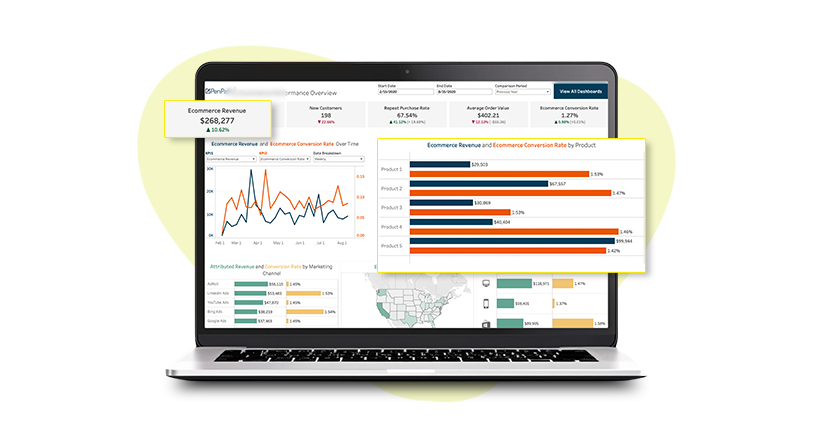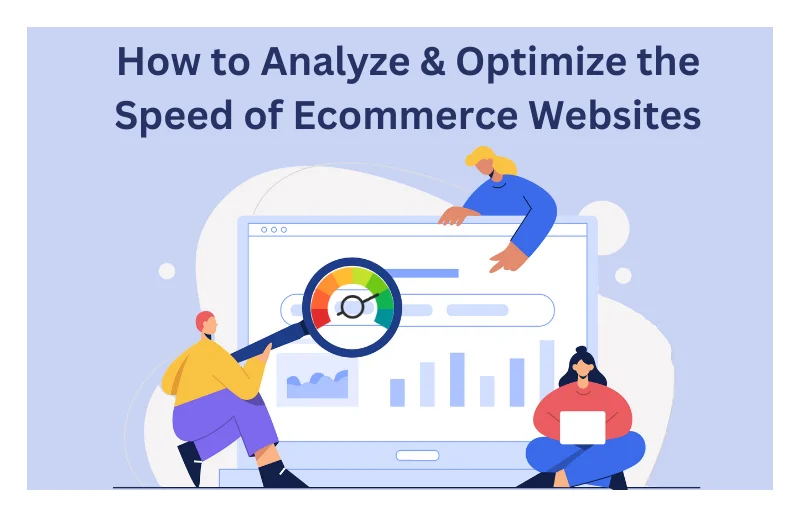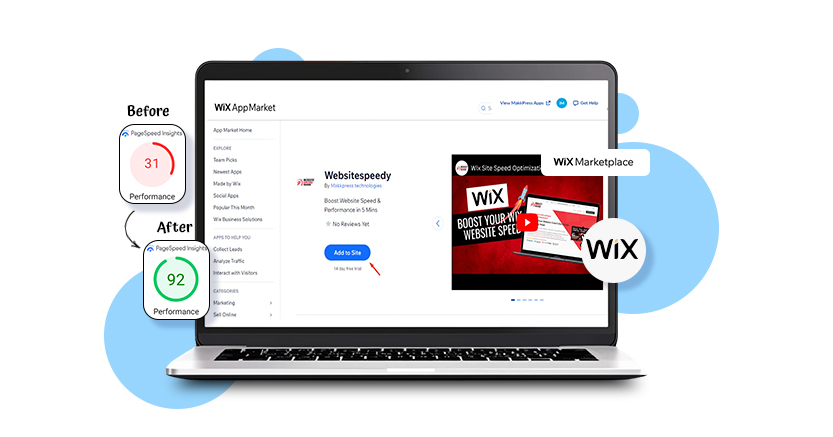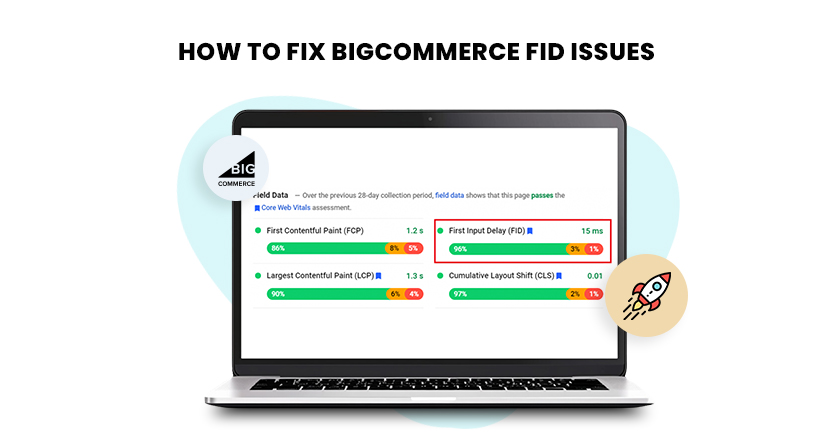Introduction
In the increasing world of ecommerce, speed is everything. When it comes to online shopping, every second counts. A slow-loading website can lead to frustrated customers, abandoned carts, and lost revenue. In contrast, a lightning-fast website enhances user experience and significantly boosts conversion rates. This is where Ecommerce Performance Optimization becomes crucial.
By optimizing your website’s speed, you can ensure that your customers enjoy a seamless shopping experience, leading to higher sales and better customer retention. Here’s how you can optimize your E-commerce platform and increase organic traffic.
Why Website Speed is a Game-Changer for Ecommerce Optimization?
Ecommerce Speed Optimization is one of the most critical factors to enhance the performance of your website. Studies have shown that a delay of even one second in page load time can result in a 7% reduction in conversions.
For online stores, this can translate to a substantial loss in revenue. Moreover, faster websites rank better on search engines like Google, which prioritizes speed as a ranking factor. A well-optimized website not only loads quickly but also provides a smooth and engaging user experience, which is key to driving conversions and increasing customer satisfaction.
Understanding Core Web Vitals and Their Importance in Ecommerce Performance
Core Web Vitals are a set of metrics defined by Google that measure the quality of user experience on a webpage. These metrics focus on three key aspects:
- Largest Contentful Paint (LCP): Measures loading performance. A fast LCP ensures that the page’s main content loads quickly.
- First Input Delay (FID): Measures interactivity. A low FID means the page responds quickly to user inputs.
- Cumulative Layout Shift (CLS): Measures visual stability. A low CLS ensures that the content doesn’t shift unexpectedly as the page loads.
Optimizing these metrics is essential for Ecommerce performance optimization because they directly impact user experience and, consequently, your site’s rankings on Google. Website Speedy excels at optimizing these vitals, making it easier for ecommerce businesses to meet Google’s standards and improve their online performance.
How to Optimize Ecommerce Website Speed for Better Performance?
Ecommerce speed optimization involves several key strategies, each of which plays a crucial role in improving overall website performance. Below are some of the most effective methods:
1. Optimize Website Code
Minimizing and compressing your website’s code can significantly reduce load times. Tools like Gzip compression and CSS minification can help streamline your code, making it faster for browsers to process.
2. Use a Content Delivery Network (CDN)
A CDN distributes your website’s content across multiple servers around the world, reducing the distance between your site and your users. This not only speeds up load times but also improves site reliability.
3. Leverage Browser Caching
Browser caching allows frequently accessed files to be stored locally on a user’s device. This reduces the need for repeated downloads, speeding up subsequent visits to your site.
Optimize Ecommerce Website Performance Instantly
Boost Ecommerce Site Speed Now4. Optimize Images
As mentioned earlier, images can significantly slow down your website. Providing good-quality images on your e-commerce platform helps create a good shopping experience for users. Therefore, optimize your images to reduce file sizes without compromising quality.
5. Enable Lazy Loading
Lazy loading defers the loading of non-essential images and content until they are needed. This reduces initial load times and improves user experience.
6. Reduce Server Response Time
Ensuring your server responds quickly to user requests is essential for speed optimization. This can be achieved using faster hosting solutions and optimizing your server configuration.
Common Challenges in Ecommerce Performance Optimization
While optimizing your ecommerce website for speed can yield significant benefits, it’s not without its challenges. Some common obstacles include:
- Complex Site Architecture: Ecommerce sites often have complex structures with numerous pages and elements, making optimization more challenging.
- High-Resolution Images: While essential for showcasing products, high-resolution images can slow down your site if not properly optimized.
- Third-Party Integrations: Many ecommerce sites rely on third-party tools and plugins, which can introduce additional load times.
Overcoming these challenges requires a combination of the right tools, such as Website Speedy, and best practices in web development.
The Role of Website Speedy in Ecommerce Performance Optimization
Maintaining a good speed on your website increases conversion rates and revenue. Studies show that a one-second delay in page load time can lead to a significant conversion drop. By improving your site’s speed, you can reduce bounce rates, increase the time users spend on your site, and boost your conversion rates.
When it comes to optimizing website speed, few tools are as effective as Website Speedy. This tool specializes in several key areas that are crucial for fixing core web vital issues of an E-commerce website:
- Enable Lazy Loading: Lazy loading is a technique that delays the loading of non-essential elements until they are needed, significantly improving page load times. This is particularly useful for image-heavy e-commerce sites.
- Eliminate Render Blocking: Render-blocking resources, such as JavaScript and CSS files, can delay the rendering of your webpage. Website Speedy helps eliminate these bottlenecks, ensuring that your content loads as quickly as possible.
- Reduce Initial Server Response Time: The time it takes for your server to respond to a user’s request is critical. Website Speedy optimizes server response times, reducing the delay before the page starts to load.
- Image Optimization: High-resolution images are a must for e-commerce sites, but they can also significantly slow down load times. Website Speedy automatically optimizes images, ensuring they load quickly without sacrificing quality.
In addition to these features, Website Speedy is particularly effective at fixing vital issues in BigCommerce, Shopify, Wix, and Squarespace’s core web. This makes it an indispensable tool for ecommerce websites looking to increase speed, improve user experience, and increase conversion rates.

Want to read this blog offline?
No worries, download the PDF version
now and enjoy your reading later…
 Download PDF
Download PDF Boosting Ecommerce Performance with Shopify, Wix, and BigCommerce
Different ecommerce platforms have unique challenges when it comes to speed optimization. Here’s how you can optimize performance across Shopify, Wix, and BigCommerce:
Shopify Performance Optimization
Shopify is a robust platform, but heavy themes and large image files can hinder its performance. Optimizing your Shopify store involves choosing a lightweight theme, compressing images, and minimizing the use of apps that add extra code to your site.
Wix is known for its user-friendly interface, but it can sometimes suffer from slower load times. To optimize Wix, focus on reducing the size of your images, enabling lazy loading, and using Wix’s built-in optimization tools to improve site speed.
BigCommerce Performance Optimization
BigCommerce sites can benefit greatly from tools like Website Speedy. By addressing vital issues in the core web and optimizing server response times, you can significantly improve your BigCommerce store’s speed and performance.
Conclusion
Ecommerce Performance Optimization is essential for any online store looking to succeed in today’s competitive market. By focusing on speed and user experience, you can improve your site’s performance and boost conversion rates and customer satisfaction.
Optimizing your ecommerce website is not a one-time task. It requires ongoing monitoring and adjustments to maintain peak performance. Regularly testing your site’s speed and performance metrics will help you identify new issues and opportunities for improvement. Tools like Website Speedy make it easier to achieve these goals by offering comprehensive solutions to common optimization challenges. Whether you’re using Shopify, Wix, or BigCommerce, optimizing your ecommerce site for speed will lead to better performance, higher rankings, and more sales.
FAQs on Ecommerce Performance Optimization
Q1. What is Ecommerce Performance Optimization?
A: Ecommerce Performance Optimization refers to improving various aspects of an ecommerce website, particularly speed and user experience, to boost conversion rates and enhance overall performance.
Q2. How can I improve the speed of my ecommerce website?
A: You can improve your ecommerce website’s speed by optimizing images, reducing server response times, enabling lazy loading, and using a CDN.
Q3. What are Core Web Vitals, and why are they important?
A: Core Web Vitals are a set of metrics defined by Google that measure user experience on a webpage. They focus on loading, interactivity, and visual stability and are important because they directly impact your site’s rankings on Google.
Q4. How does Website Speedy help in Ecommerce Performance Optimization?
A: Website Speedy offers a range of tools for optimizing website speed, including lazy loading, render-blocking elimination, image optimization, and server response time reduction. It also addresses vital issues of the core web, making it a valuable tool for e-commerce sites.
Q5. Why is website speed important for conversion rates?
A: Faster websites provide a better user experience, reducing bounce rates and encouraging users to complete their purchases, which directly increases conversion rates.
Q6. How often should I monitor my ecommerce website’s performance?
A: It’s advisable to monitor your website’s performance regularly, ideally monthly, to catch any issues early and ensure your site remains optimized.















































